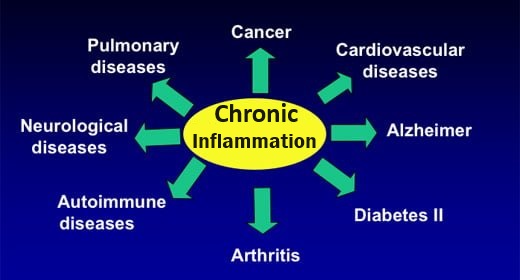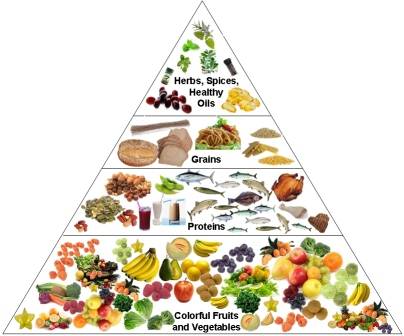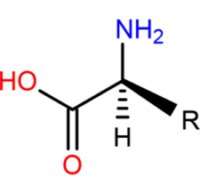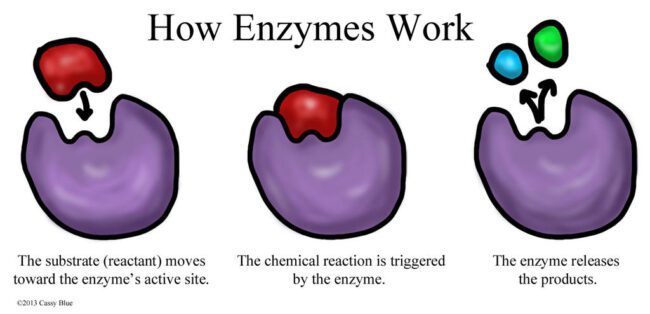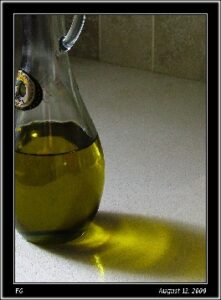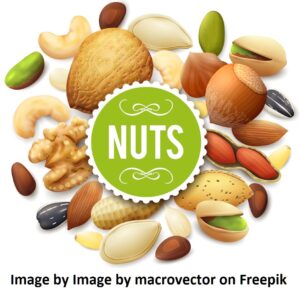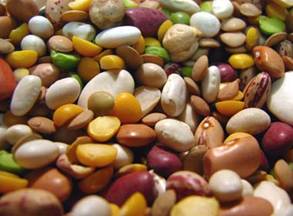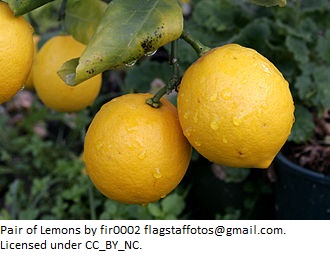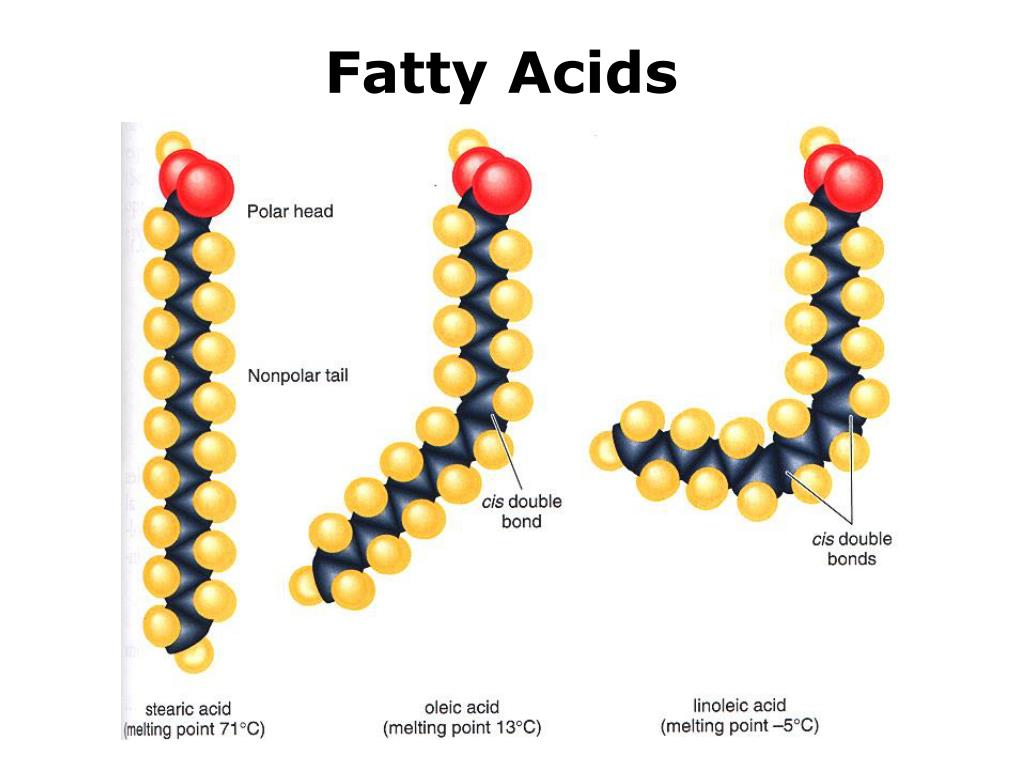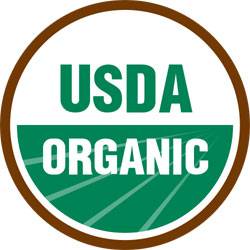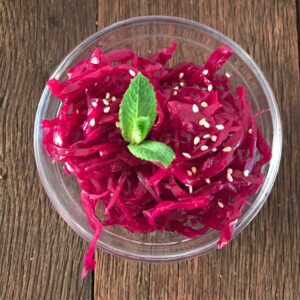Amber waves of grain - Dietary staple of the Western world
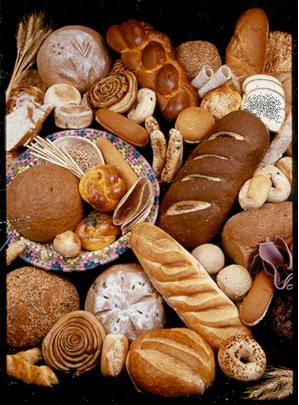
- True grains are the seeds of grasses
- Nutritionless, REFINED grains are a staple of the Western Diet
- Grains of any kind should be eaten in low to moderate amounts to avoid metabolic syndrome
- Whole grains contain “antinutrients” which need to be dealt with before consuming them
- Better choices concerning grains
- Store-bought bread
- Bread – To refrigerate or not?
- Wheat – Ain’t what it used to be
- Oats – The healthy way
- Quinoa – Protein rich / Low glycemic load
- Bran – Not the health food you thought it was
- How to Prepare Whole Grains – Soak + Sour or Sprout for healthier consumptiont

True grains are the seeds of grasses:
- Wheat. Various species include Durum, Semolina/CousCous (purified from Durum), Spelt, Bulgar, Triticale (a wheat hybrid), Kamut, Einkorn and Emmer (two of the earliest cultivated forms)
- Rye
- Barley
- Oats
- Rice
- Millet
- Corn (Maize)
- Sorgum
- Teff – superlative calcium content (1 cooked cup has 123mg)
- Wild Rice – aquatic seed mostly in freshwater lakes of Canada and the Great Lakes area; nutty flavor
- Others
Pseudo grains are the seeds of broadleaf plants, including:
- Amaranth – high amino acid content, contains lysine; combines well with other grains’
- Quinoa – complete protein (with the 8 essential amino acids); fluffy, slightly crunchy, slight nutty flavor
- Buckwheat
- Chia

Nutritionless, REFINED grains are a staple of the Western Diet

Why do we do this to ourselves!? We indulge in nutrition-less, devitalized bagels, bread rolls, pastries, cake, cookies, crackers, white bread, pasta, cereal, noodles, pretzels, tacos, waffles, pancakes, muffins; grains extruded / pressed to make crunchy breakfast cereals!
Refined (Processed) and high temperature-milled grains have a poor nutrient content (except for those that have been added). Refined grains lack minerals (since the parts containing the fiber and ~80% of the nutrients have been removed). E.g. white flour, made from the endosperm of the grain is mainly starch; diets high in such refined grains lead to serious mineral deficiencies. E.g. bone loss, Parkinson’s, arrythmia.
Even UNrefined grains contain negligible amounts of vitamins A, C, D or B12. Maize (corn) is the only grain that contains beta-carotene (vitamin A’s metabolic precursor)
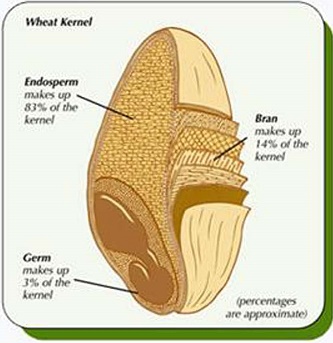

Grains of any kind should be eaten in low to moderate amounts to avoid metabolic syndrome
Most all consumed grains turn rapidly into glucose, causing blood sugar spikes. Fiber in whole grains slows down the conversion, but the end product is still sugar.
- Quinoa – is on the low end of the glycemic index (GI) and won’t cause blood sugar spikes; good choice for diabetics;
- Barley – cooked pearl barley has the lowest GI of all the grains (~25). Pearl barley is a great substitute for white rice;
A “NO-GRAIN” diet is the way to go if you want to lose weight. Use coconut or almond flour as grain substitutes
Regular grain consumption leads to INSULIN resistance and “FAT STORAGE”. Ongoing daily blood glucose spikes increases pancreatic INSULIN production for the purpose of taking the glucose out of the blood and into cells. After repeated bombardment from INSULIN, the cells protect themselves from INSULIN by downregulating their INSULIN receptors. The result is that INSULINs message can no longer be “heard” effectively, and blood sugar increases or is stored as fat, with all the consequential health problems of metabolic syndrome, including type 2 diabetes, CVD, and obesity.
Typical symptoms can include:
- Fatigue, sleepiness, depression, brain fog
- Hypoglycemia – i.e low blood sugar
- Increased trigycerides, blood pressure
- Weight gain -due to increased fat storage

Whole grains contain "antinutrients" which need to be dealt with before consuming them
“— antinutrients in whole grains include enzyme inhibitors which can inhibit digestion and put stress on the pancreas; irritating tannins; complex sugars which the body cannot break down; and gluten and related hard-to-digest proteins which may cause allergies, digestive disorders and even mental illness.”
“Proper preparation of grains is a kind and gentle process that imitates the process that occurs in nature. It involves soaking for a period in warm, acidulated water in the preparation of porridge, or long, slow sour dough fermentation in the making of bread. Such processes neutralize phytic acid and enzyme inhibitors.”
Antinutrients are present in specific grains to varying degrees and affect each person differently. Those who are sensitive to them can experience damage to the gut lining (which can sometimes cause a breach leading to inflammation in diverse areas of the body), immune system modulation, gut flora imbalance and nutrient malabsorption. The main culprits in grains are:
- Agglutinins. Wheat germ contains the particularly harmful wheat germ agglutinin (WGA) lectin
- Prolamins. E.g. gliadin in gluten – the digestive-troubling half of the gluten molecule
Harmful food lectins (prolamin and agglutinin)
- Phytic acid.
“— Phytic acid, for example, is an organic acid in which phosphorus is bound. It is mostly found in the bran or outer hull of seeds. Untreated phytic acid can combine with calcium, magnesium, copper, iron and especially zinc in the intestinal tract and block their absorption.”
– Sally Fallon Weston A. Price Foundation
Some people are intolerant to certain amino acid sequences in wheat, barley, rye and possibly oats. Prolamins are proteins containing amino acid sequences (E.g. Pro-Ser-Gln-Gln and Gln-Gln-Gln-Pro) which can provoke an inflammatory reaction that is damaging to intestinal tissue that is sometimes diagnosed as Celiac Disease in those with severe intolerance. E.g. In those overly sensitive to gliadin in gluten, the immune system creates antibodies to attack gliadin. The real problem occurs as water-soluble gluten dissolves, since it can then bind to body cells, and during the immune system’s “fight” with the gliadin, those cells and surrounding tissue also get “hurt”.
Prolamins include:
- Gliadin (a component of gluten) – mainly in wheat, rye and barley.
- Hordein – in barley
- Secalin – in rye
- Avenin – in oats (doesn’t contain as many inflammation-provoking amino acid sequences as gliadin, hordein and secalin)
The grains with the highest amount of inflammation-provoking amino acid sequences in prolamins. Include Wheat, Barley, Oats, Rye, Semolina, Bulgar, Durum, Kamut, Spelt, Triticale.
Some grains, even though they contain gluten, do not have significant amounts of prolamins (such as gliadin). These are usually tolerated by those with Celiac Disease. These include Rice, Corn, Buckwheat , Millet,Sorghum, Teff, Quinoa, Amaranth and possibly Einkorn wheat.
Gluten-containing grains are hard for us to digest and absorb. These should be appropriately prepared for consumption. Sprouting and overnight-soaking do not have much effect on gluten levels – only sourdough bread made traditionally using 3-day fermentation (souring) will be gluten-free. Be aware that many sourdough breads sold are not gluten-free because they are not traditional sourdough breads – the real thing will list a sourdough starter instead of yeast in their ingredient list.

Better choices concerning grains
First consider
You can substitute vegetables for grains in a meal. E.g. Sustitute rice or noodles with “Cauliflower Rice” (recipes galore on the net) or chopped cooked cauliflower, or spaghetti squash for pasta
Wheat in any form is probably not good for you. Eat wheat products sparingly, if at all
Wheat – “Ain’t what it used to be”
Grains must be properly prepared to be more healthful
“Look for organic, stone ground, sprouted or sour dough whole grain breads and enjoy them with butter or cheese.”
– Sally Fallon, Weston A Price Foundation
OVERCONSUMING UNsoaked / UNgerminated WHOLE grains (i.e. by eating them as a regular part of your diet) could be a major cause of your health problems – benefits of these traditional preparation steps include:
- Produce natural enzymatic activity to make the grains more digestible – and so make its nutrients more available to us.
- Removes many antinutrients (E.g. phytate, lectins, tannins, others) contained in whole grains- which, if they remain, can cause nutrient deficiencies, overgrowth of harmful bacterial and irritate the intestinal lining, possibly causing a so-called “leaky gut”. The scene is set for many potential health problems, including:
- Food intolerances / allergies.
- Gluten (50% lectins) insensitivity
- Impaired immune function – Lectins are associated with auto immune disease
- Irritable Bowel Syndrome (IBS)
- Osteoporosis
- Chronic Inflammation
- INSULIN resistance – Involved in metabolic syndrome, obesity / weight gain, Type 2 diabetes
- Blocked mineral and protein absorption – Active phytic acid blocks both protein and minerals both in the grain food and in other recently consumed foods; minerals blocked include calcium, iron, magnesium, copper and zinc.
- Decaying teeth – Resulting from mineral deficiencies
To make WHOLE grains more digestible, make their nutrients more available, and partially remove phytic acid they must be soaked (usually overnight), then soured (fermented as in sourdough) or sprouted at a low temperature– these methods encourage phytase enzymes to break down some of the grain’s phytic acid content, but in those grains with a low phytase content, much of the phytic acid will remain unscathed;
- Grind organic, WHOLE grains yourself using a grain mill or buy organic, 100% stone-ground, whole-grain flour (usually found at a natural health food store) – freshly ground grains generally have more phytase enzymes than older flour with which to break down phytate.
- “Unfortunately, studies do NOT tend to support the significant reduction of the lectin “wheat germ agglutinin (WGA)” in WHOLE wheat by either soaking, sprouting and/or souring – WGA is particularly high in the wheat germ (agglutinin is also abundant in peanuts, soybeans, and red kidney beans) and even small amounts have been shown to cause inflammatory activity in the immune system. WGA’s trail of devastation includes gut inflammation, activating immune system’s white blood cells, attaching to nerve-protective myelin sheath, and cellular toxicity and death. There are many reasons not to eat wheat, It is probably prudent to steer clear of WHOLE grain wheat altogether, since WGA is contained in the wheat germ of the whole grain seed and is difficult to remove. It almost “kills” me to say this 🙂 . . . but if you insist on including wheat as a regular part of your diet, then your health would probably be better served by eating white wheat bread rather than whole wheat!
Grains -SOAK + SOUR or SPROUT for healthier consumption
BTW – Wheat used to be left to sprout in the fields after harvesting – prior to modern farming methods, harvested wheat was left in the fields for several days, where the morning dew provided enough moisture to partially sprout the wheat, thus enhancing its nutritional bioavailability by removing phytates.
Eat grains with nature’s fat-soluble vitamins A and D
“Fat-soluble vitamins A and D found in animal fats like butter, lard and cream help us absorb calcium, phosphorus, iron, B vitamins and the many other vitamins that grains provide. Porridge eaten with cream will do us a thousand times better than cold breakfast cereal consumed with skim milk; sourdough whole grain bread with butter or whole cheese is a combination that contributes to optimal health.”
– Sally Fallon, Weston A Price Foundation

Are there any good store-bought breads?
Prefer organic, stone-ground, sprouted or traditionally processed sour dough, whole grain breads
Unfortunately , sprouted wheat grain breads still contain the harmul wheat germ agglutinin (WGA) – since it resists degradation by traditional methods

Bread, bagels, rolls etc - To refrigerate or not?
| Fridge | Room temperature | |
| Freshness | Goes stale up to 6 times faster | Stays fresh longer |
| Mold rate | Slower | Faster |
Best solution – leave enough bread products for a couple days anticipated use at room temperature and freeze the rest (stops mold growth).

Wheat - "Ain't what it used to be"
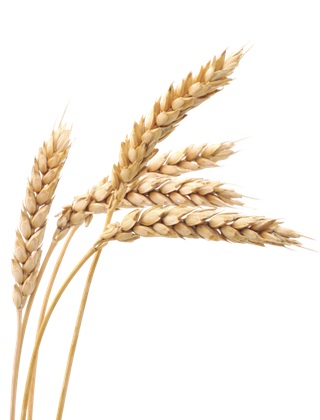
Wheat species
Buckwheat, Durum, Semolina/CousCous (purified from Durum), Spelt, Bulgar, Triticale (a wheat hybrid), Kamut, Einkorn and Emmer (two of the earliest cultivated forms)
Einkorn wheat
Earliest form of wheat farmed over 5,000 years ago. A species of hulled wheat; starch in Einkorn is slowly digested and doesn’t cause blood glucose spikes as much as other grains; contains an older form of gluten more gentle on the digestive system.
Many bible verses refer positively to eating bread, especially unleavened bread. However, the wheat of today is quite different to that of bible times
Compared to modern wheat, einkorn wheat contains:
- Half as much phyic acid – an antinutrient that blocks mineral absorption
- Contains 3-4 times beta-carotene
- Twice vitamin A
- 3-4 times lutein
- 4-5 times riboflavin
Wheat is not what it used to be due to hybridization and GM strains
The wheat plant no longer identifies with “the amber waves of grain” of more than a hundred years ago . . . now it has an efficient, shorter (~ 18″ high) stalk, resisting damage by storms and pests, making it easier to harvest. Also American wheat has been bred to have a higher gluten content than European wheat.
Modern wheat and the high quantities consumed seem to have induced several negative health effects
Including causing:
- Accelerated weight gain. One of the main sources of carbohydrates, wheat actually has a higher glycemic index at 71 (average for refined white and whole wheat flour) than table sugar (sucrose) at 65! Also a recent in vivo study determined that both WHOLE wheat and REFINED WHITE flour bread have a similarly high glycemic response. Zafar et al, 2020
Cut the wheat, Cut the weight
- Appetite stimulation.
- Gluten- related maladies. E.g. Celiac Disease, nervous disorders, and others.
- Blood sugar roller coaster ride. With INSULIN resistance as a consequence.
- Inflammation, osteoporosis, arthritis, joint pain, more. Due to its acidity and anti- nutrients, such as phytates and lectins.
Modern refining process removes nutrients / adds chemicals / damages fat
A wheat kernel (or berry or seed) is composed of:
- The bran (Outer seed coat) – ~14% of kernel; rich in fiber, B vitamins, trace minerals; removed by refining process;
- The wheat germ (small core) – ~3%; the sprouting portion of the kernel; rich source of vitamins B and E; provides nourishment for the seed; removed by refining process;
- The endosperm (the middle) – ~ 80- 85%; the mainly starch + protein food supply for the sprouting seed. Low B-vitamin and fiber content.
High milling temperatures turn grain’s fatty acids rancid. According to Sally Fallon, at the Weston A. Price Foundation, rancidity increases when milled flours are stored for long periods of time, particularly in open bins. Wheat used to be ground slowly at cool temperatures (sometimes using big stones, which leave most of its nutritious bran intact), but now it is ground using high- speed, high- temperature steel rollers .
White flour is bleached, nutrient deficient and contains harmful chemicals
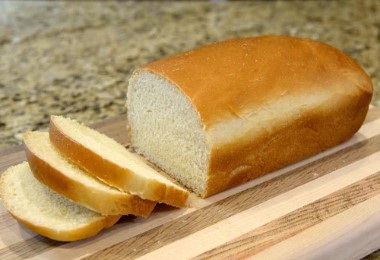
8429 Sliced crispy white bread
by freefoodphotos. Licensed CC BY 3.0
- White flour has been chemically bleached at the end of the refining process. A chlorine bath (producing chlorine oxide) is the industry standard for whitening processed flour for eye appeal, since oxidation during the refining process leaves the flour a less attractive grayish color. This process also ages the flour to improve its gluten (and thus its baking quality), replacing the need to actually take time to age the flour.
- Diabetes-causing alloxan is produced as a by-product of the flour bleaching process – Alloxan is used to purposely develop diabetes in lab rodents, since it destroys pancreatic, INSULIN-producing beta-cells by greatly increasing damaging free radical presence in them. If you don’t want to risk getting diabetes, then you don’t want this toxin in your body, even in small amounts.
- White flour is commonly the main ingredient in hamburger buns, tortillas, pastries, pasta, breads and cakes.
Nutrients lost from white flour along the refining “road”?
- Almost all its vitamin E
- 90% of its magnesium
- 80% of its iron
- 70% of its phosphorus
- 50- 80% of its B vitamins
- 50% of its calcium
- 50% of its beneficial unsaturated fatty acids
- And many more nutrients
Additives add insult to injury – “synthetic vitamins and an unabsorbable form of iron added to white flour can cause numerous imbalances; dough conditioners, stabilizers, preservatives and other additives add insult to injury.”- Sally Fallon

Oats - The Healthy Way
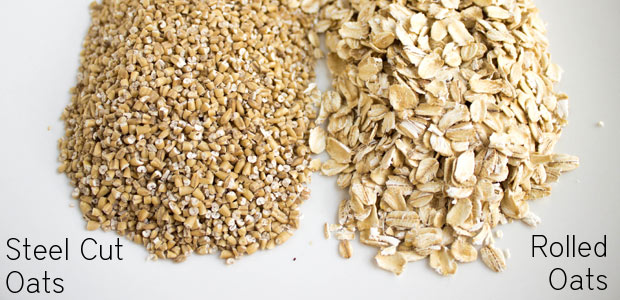
All oats for consumption have been stripped of their hard outer hulls, but retain the protective inner bran layer – its inherent healthy nutritives and fiber intact. However, oats can also contain antinutrients.
Possible antinutrients in oats:
- Phytic Acid. Oats have substantial phytic acid content – but low phytase enzyme content;
To break down phytic acid – All forms of oats require soaking for 12-24 hours with extra phytase enzymes added
- Lectin (Agglutinin). Oats typically have LOW agglutinin levels, provided they have not been cross-contaminated with wheat, barley or rye;
- Gluten / Gliadin (Prolamin). Pure/uncontaminated oats are pretty much gluten free, just ensure they come from a certified gluten-free (non-contaminated) source
Oats can become cross-contaminated with other grains. Because of this issue, some products are labelled specifically as “pure” oats.
- Oats are often grown near fields or in crop rotation with wheat, barley and rye. These grains contain lectins – such as gliadin (the troublesome component of gluten) or agglutinins.
- Packaging plants can mix other grains in with the oats
Available forms of oats
And you thought that oats were just oats! 🙂 Really though – the difference between the forms is simply in the level of processing. No matter the level of processing, all oat forms have a similar nutritional profile;
- Oat groats. Nutty flavor, chewy texture;
- Steel-cut / Irish oats. Oat groats have been chopped into 2 or 3 pieces; nutty flavor; rank lower than rolled oats on the glycemic index , because it takes longer for digestive enzymes to reach and break down the starch in thicker pieces, slowing down its conversion to sugar; these oats have been heat-treated to about 110°F to prevent rancidity of polyunsaturated fatty acids;
- Oat flour (ground whole oat). Contains the antinutrient phytic acid and so should be properly prepared
- Rolled “Old Fashioned” oats. Steamed to soften and prevent rancidity (partially cooked at 200°F for 4-5 hours; polyunsaturated acids can otherwise go rancid within 3 months; even Scottish ), then put through mechanical rollers to flatten them into flakes; this increases surface area for a quicker soaking/cooking time than groats or steel-cut oats. Can be used in baked goods.
- Quick rolled oats. Same steaming / rolling as rolled oats, only more of it and rolled thinner; more fragmented than rolled oats – creamier and less chewy; even shorter soaking/cooking time;
- Instant oats. Steamed longer than quick oats, so precooked, rolled even thinner and then dehydrated; no cooking required, just rehydrate; often put in ready-to-use packets along with lots of sugar and artificial flavorings and mystery ingredients.
- Oatmeal powder. Sometimes used as baby food
Buy in small quantities
Oats have a higher fat content than most grains and so tend to go rancid faster – Buy in small quantities and store in the fridge.
How to make healthy oatmeal / porridge (for the Brits among us 🙂 )
Soak the oats before cooking them to reduce phytic acid content:
- Add to the pan you’ll use for cooking the oatmeal:
- 1 Cup rolled or steel cut oats (Serves 4)
- 1 Cup warm water
- 1 Tbsp. lemon juice or whey (required acid medium)
- 2 Tbsp. fresh rye or barley flour (lower agglutinin levels than wheat) to provide the phytase enzymes missing from the oats; grind a few whole rye grains in a mini grinder so they are fresh and so contain maximum phytase.
- Leave 12-24 hours
- Add 1 cup of water (and I usually add some anti-inflammatory cinnamon )
- Bring to a boil and cook for a few minutes to desired consistency (leave a bit soupy if you’re going to top with flaxseed – it will absorb the liquid).
- Serve with milk and/or fresh cream (Optionally add berries, banana, pecans, walnuts, maple syrup, a Tbsp of ground flax seed for some helpful hormonal balancing and Omega-3)
A note on sprouting oats
Phytate content of oat seeds decreased 79% during germination. From 0.35% 0.11%, assumed due to an increase in phytase activity as germination progressed. germinated (malted) porridge significantly increased iron and zinc uptake in humans. Processing oats, 2015
Oats were on the menu during hunter-gatherer paleolithic times
According to Sarah Pope MGA of The Healthy Home Economist:
- “The Archaeological Institute of America has recently reported the surprising results of tests conducted by scientists at the University of Florence. The tests involved a stone pestle recovered in the Apulia region of Southern Italy.
- Apulia is home to the archaeological site knows as the Paglicci Cave that was used by Paleolithic hunter-gatherers of the Gravettian culture between 32,000 and 34,000 years ago. These stone age humans painted murals on cave walls and engraved images of goats, cows, a serpent, and a nest with eggs. They also painted hunting scenes on bones.
- The stone pestle was originally discovered in the cave back in the 1950s, but tests have only now revealed the composition of the stone’sstarchy debris.
- The tests revealed that the stone pestle had been used to grind none other than dried oats! The oats were first gathered and then heated which likely served as a primitive form of food preservation in the cool, damp climate. The heating also helped to dry out the oats, making them easier to grind.
- Researchers suggest that the oat powder that resulted from the grinding process was boiled into a porridge-like gruel or even made into bread.”

Quinoa - Protein rich / Low gyycemic load
- Quinoa is a protein-rich and low glycemic load food, meaning it has only a small impact on blood sugar. This makes it a good grain to stabilize blood sugar and leaves you feeling satisfied.
- Research studies have shown that the prolamins in quinoa, corn and oats can damage the digestive tract in people with Celiac Disease yet these grains are frequently included in the “gluten-free” diet.

Bran - not quite the health food you thought it was
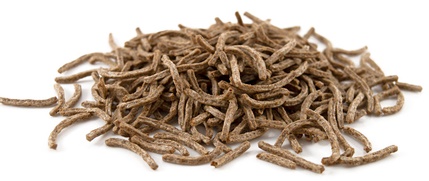
Bran is the hard outer layer of whole grains. Such as wheat, rye, oats and rice. It is rich in fiber, antioxidants and minerals.
However, bran has high phytic acid (PA) and agglutinin (notably wheat germ agglutinin (WGA)) content. Bran content in foods greatly increases PA and agglutinin amounts in whole wheat breads and bran-rich cereals PA varies in different grains (see chart below).
- PA has a strong ability to chelate multivalent ions, such as zinc, calcium, resulting in their poor bio-availability.
- In those susceptible to its effects, agglutinin is responsible for intestinal wall inflammation / damage e.g. irritable bowel syndrome (IBS) (with possible breach into bloodstream, where it has the ability to clump red blood cells).
| Flour or bread | ~PA mg/g |
| Bran flour | 20 |
| Wheat bran | 33-47 |
| White baking flour | 2.98 |
| White bread | 1.48 |
| Whole White flour bread (wheat and whole flours) | 11.55 |
| Mixed grain flour (Wheat, corn, sesame, flax, oat, braley, millet, whole soy, whole rye flours) | 9.81 -11.30 |
| Mixed grain bread | 3.81 |
| Oat flour (oat fiber; wheat and oat flakes; wheat flour) | 0.36 ±0.23 |
| Oat bread (mixed flours) | 5.16 |
| Oat bran | 21-24 |
Phytic acid content in milled cereal products and breads
The study estimates that the intake of whole bread instead of white bread or brans would cause a daily increase of phytic acid of approximately 350 mg
EXTRUDED bran and whole grain cereals (E.g. All-bran ®, Bran Buds) are a recipe for digestive disaster and mineral deficiencies. Slurries of extremely high phytic acid (PA) grains are forced through tiny holes at high temperatures and pressures, which destroy the phytase enzymes that might have broken down some of the PA – you might be regular, but at what cost? – Flaxseed (negligible phytate content) and prunes are your better choice. Snippet from 1999 study: RM GarcıÌa-Estepa, E Guerra-Hernández, 1999.. Phytic acid content in milled cereal products and breads. Food research International – Elsevier.
References
Processing Oats and Bioactive Components, Apollinaire Tsopmo, in Processing and Impact on Active Components in Food, 2015
Miskind et al (1980, Nov), Distribution of wheat germ agglutinin in young wheat plants, Plant Phys. (1980 Nov) 66(5):950- 955 PubMed
Zafar TA, Aldughpassi A, Al-Mussallam A, Al-Othman A. Microstructure of Whole Wheat versus White Flour and Wheat-Chickpea Flour Blends and Dough: Impact on the Glycemic Response of Pan Bread. Int J Food Sci. 2020 Oct 5;2020:8834960. doi: 10.1155/2020/8834960. PMID: 33083447; PMCID: PMC7557900. PubMed












